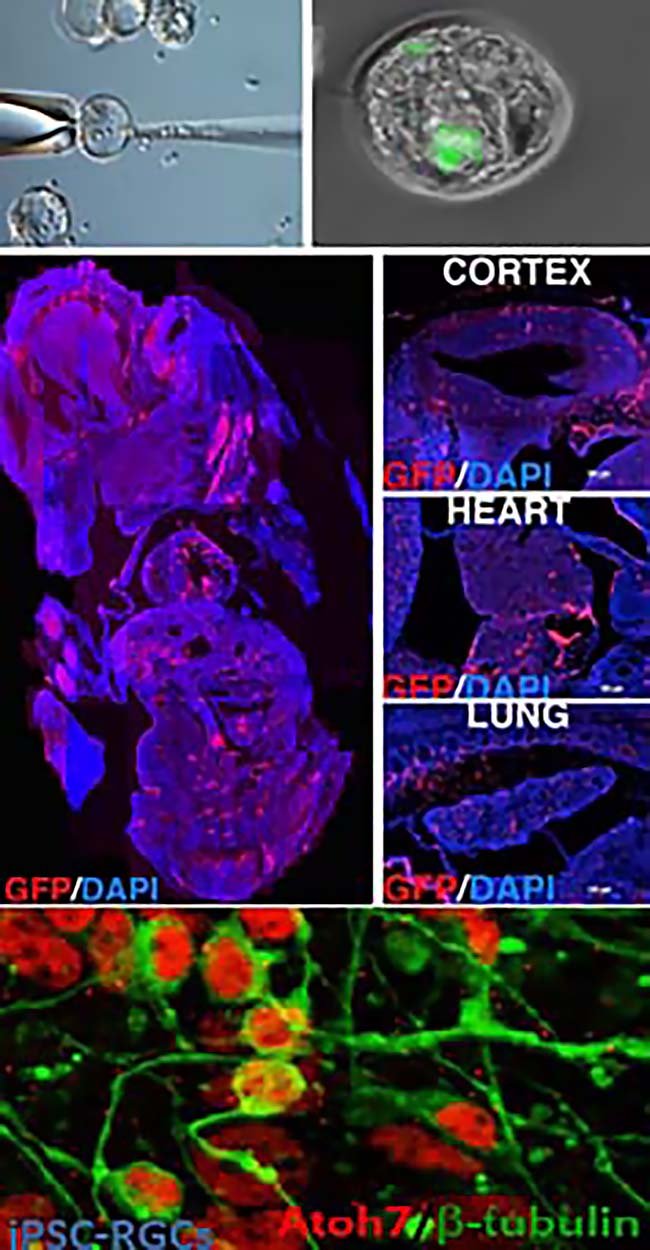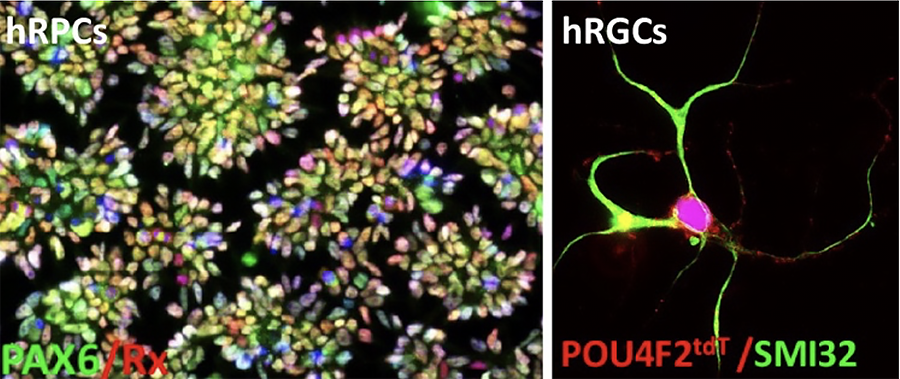Reprogramming and Alternate Sources of RPCs

While progenitors isolated from the embryonic retina shed valuable light on the regulatory mechanisms, their use in cell therapy and disease modeling for retinal degeneration is rather impractical for ethical and immunological reasons. Therefore, we have been interested in renewable sources of RPCs and identified progenitors derived from ciliary epithelium (Ahmad et al., 2000 BBRC), limbal epithelium (Zhao et al., 2008 Stem Cells), ESCs (Zhao et al., 2002, BBRC) and iPSCs (Parameswaran et al., 2015 Stem Cells) cells with retinal potential. We demonstrated for the first time that somatic stem cells (e.g., limbal stem cells) can be induced or reprogrammed into pluripotent stem cells (iPSCs) by a non-nucleic acid method by the simple exposure to ES cell conditioned medium, establishing the rejuvenating potential of the niche (Balasubramanian et al., 2009, Stem Cells). Upper panel (image: Sowmya Parameswaran) shows the generation of a chimeric embryo using the iPSCs derived from limbal stem cells by non-nucleic acid method generating cells of three germ lineages.

The rejuvenated stem cells with pluripotency are robust source of RPCs, which could be directly differentiated along photoreceptors and RGC lineages (Parameswaran et al., 2015 Stem Cells). For reproducible generation of RGCs from pluripotent cells for ex-vivo stem cell therapy and disease modeling we have developed a xeno-free method that involves recapitulation of the developmental mechanism (Teotia et al., 2017, Stem Cells; Subramani et al., 2023 Front. Cell. Dev. Biology). The de novo generated RGCs share properties with the native RGCs at genomic, biochemical, cellular and functional levels. Lower panel (image: Murali Subramani) shows the generation of hRPCs and hRGCs from hESPOU4F2-tdT cells by recapitulation of the developmental mechanism.